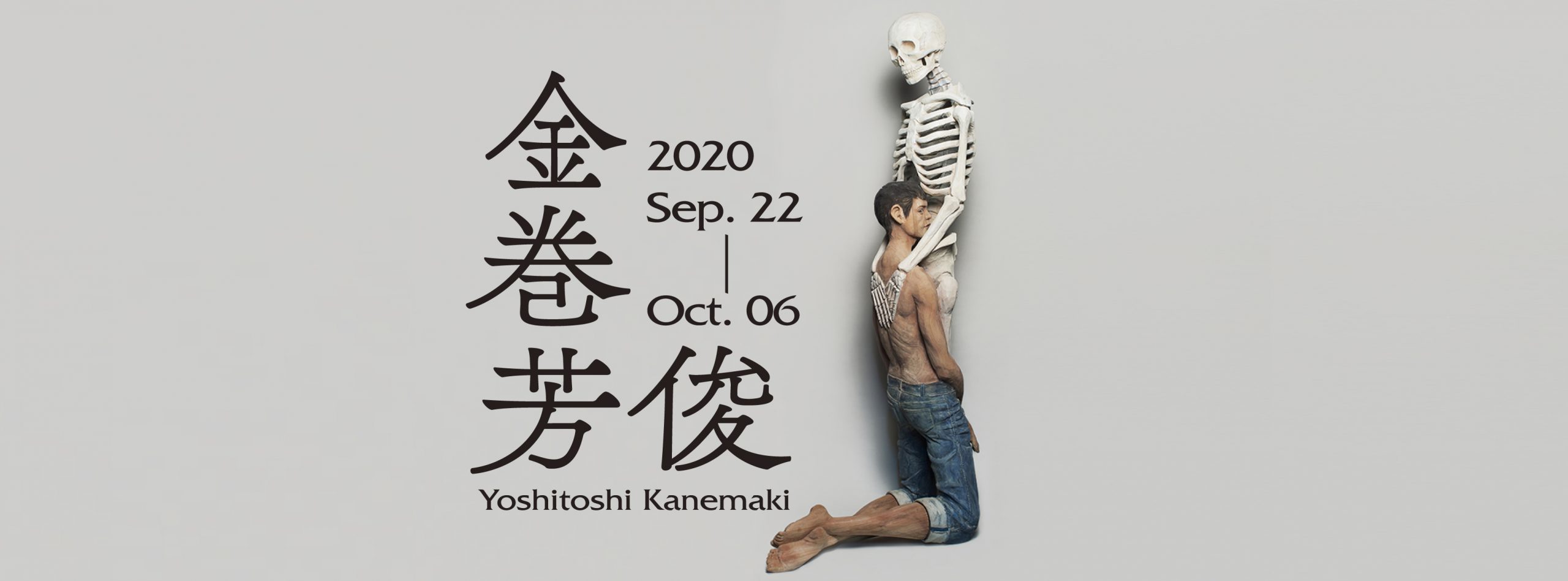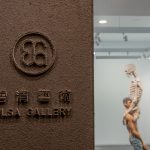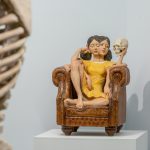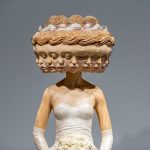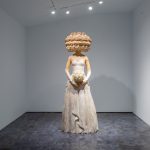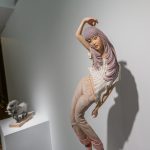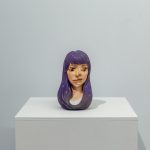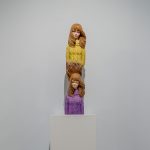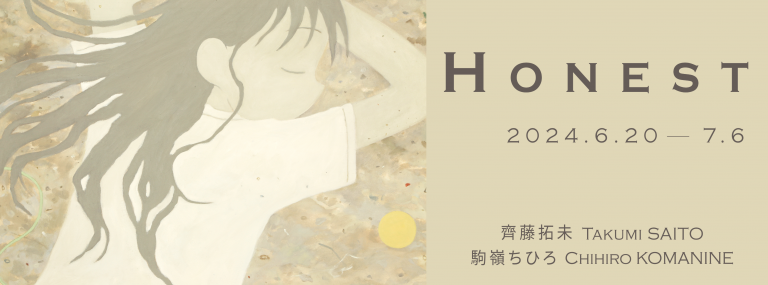–
GALLERY HOURS | Tue.–Sat. 12:00–19:00
CLOSED | Sun.–Mon., National Holidays
–
近年來活躍於⽇台藝壇的⽊雕藝術家中,⾦巻芳俊(Yoshitoshi Kanemaki)無疑是獨樹⼀幟的存在。憑藉精湛技術⽀持,其充滿超現實感卻又異常和諧的雕塑作品,以當代⼈物⽊雕中少⾒的繁複造型,精準⽽熟稔地反映了藝術家的創作意念與獨道美學。
⾦巻芳俊將現代⼈⾯對⽣命⽇常中各種迷惘情境的複雜⼼靈樣態,以如殘像般多重疊加、續接的⼈物不同⾯部表情與肢體構造具象呈現。可能是某個當下瞬間的情緒反差,也可能是輾轉於各種分裂又融合的潛意識之間凝縮的過程。2011年台灣首次個展《⽭盾情結Ambivalence》金巻芳俊以此創作主題與觀眾初識,刻畫人類總是周⽽復始地與⽭盾共存,在迷惘世界中努⼒求⽣的現世眾⽣相,成為藝術家至今持續不斷擴充與深化的創作主題。
若《⽭盾情結/Ambivalence》內含了「⽣」的概念,那麼2013年的個展《勿忘死亡/Memento Mori 》,則圍繞著「死」⽽展開。本次展覽也將呈現金巻芳俊此一系列中經典作品<是刻 勿忘生死Right Time Memento Mori>。以⽇本雕刻詮釋西⽅⽂化中「想著死亡的凝重,並勿忘⾎⾁之軀終將⼀死」的深刻哲思,直⾯⽣與死的永恆命題,青春的⾁身與象徵死亡的骷髏,以可供多元解讀的姿態合⽽為⼀。人體和骷髏相互鑲嵌,暗指死亡和生命並非只是對立的兩面,而是不斷重新劃定界線的動態關係;直觀上是對立的二元概念,藝術家將其並置於作品之中,似乎暗指死亡與生存其實有相互依存、彼此定義的可能,同時作為另一種體現矛盾共存主題的系列重要作品。
–
Among all the wood carving artists who have been active in Japan and Taiwan in recent years, Yoshitoshi Kanemaki is undoubtedly a special figure. With meticulous skills, Yoshitoshi Kanemaki creates sculptures that are surreal yet unexpectedly harmonious. His human figures are complicated in forms, which are rarely seen among contemporary wood sculptures in the form of humans, reflecting the artist’s creativity and aesthetics with precision and sophistication.
Kanemaki embodies the complex mindsets modern people have towards lives by fixing multiple heads with different facial expressions on the same human figure or creating scenes with one same person doing different things at the same time and in the same body as if they were afterimages. These sculptures can demonstrate the change of a person’s emotions within an instant, or the expansion and collapse of their subconscious minds. Looking back, Kanemaki presented “Ambivalence”, his first solo exhibition in Taiwan in 2011, illustrating how humans coexist with ambivalence on and off throughout their lives, and how proletariat manage to survive in this confusing world – this is a subject that the artist keeps developing and exploring even today. If we consider “Ambivalence” a representation of “life”, then “Memento Mori”, his solo exhibition in 2013, would be a representation of “death”.
Memento Mori, the self-titled and iconic series found in “Memento Mori”, is another series that we would like to present you. Kanemaki uses Japanese sculpture to illustrate the western philosophy – Bear the weight of death in mind, and do not forget that flesh and blood will eventually die. The artist looks into the eternal proposition of life and death, with the juxtaposition of skulls that speak of death as well as flesh and blood that represent youth so as to allow for multiple interpretations for his works. The combination of human bodies and skulls suggest that life and death are not in the opposite sides. Instead, the boundaries between them constantly change, and they rely on each other for defining themselves even though they seem to be binary concepts. This series is an important manifestation of ambivalence.
